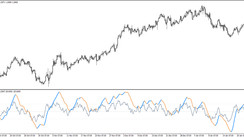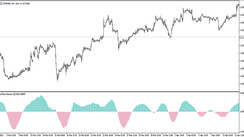The Allure of Forex Trading
The dynamic world of foreign exchange trading, popularly known as forex, has been steadily gaining traction among speculators. Its appeal lies in the round-the-clock market access, potential for substantial earnings, and the prospect of trading without commission. Further enhancing the allure is the ease of setting up simulated trading accounts, enabling individuals to hone their trading techniques in a risk-free environment.
However, it's important to recognize that this simplicity can mask the potential hazards lurking beneath the surface. The forex market may be vast, but it's also a highly competitive arena where one must vie against an army of seasoned analysts and experts. These professionals, many of whom are affiliated with major banks and funds, have substantial experience and deep knowledge of the market's intricate workings.
The foreign exchange market operates 24/7, with no centralized exchange. Instead, trades occur directly between various market participants, such as banks, brokers, fund managers, and others. Moreover, the advent of artificial intelligence has revolutionized forex trading with predictive analytics models and machine-learning capabilities. These technological advances equip forex traders with significant advantages.
The forex market isn't a domain for the uninitiated or ill-prepared. To be successful, investors should do comprehensive homework before stepping into this arena. This includes understanding the economic foundations of the major currencies and identifying the unique factors influencing their value.
A Spotlight on the Canadian Dollar
Eight key currencies dominate over 80% of forex trading volume. Among these is the Canadian dollar, often dubbed the "loonie" due to the depiction of a loon on the C$1 coin. This currency holds the sixth position in terms of global reserve holdings. Its standing is rather unique, given that Canada ranks tenth worldwide in terms of GDP (in U.S. dollars) and its population doesn't feature prominently among major economies.
Despite this, Canada is the world's 12th largest export economy, according to the Observatory of Economic Complexity hosted by MIT. The country's journey with its currency value has seen various turns since the implementation of the Bretton Woods system. Between 1950 to 1962, the Canadian dollar floated freely until severe depreciation led to governmental change, and Canada shifted to a fixed rate. However, high inflation in 1970 led the government to revert to a floating system.
Like all major currencies, a central bank backs the Canadian dollar – in this case, the Bank of Canada. All central banks strive to strike a balance between fostering employment and economic growth while keeping inflation in check. While foreign trade significantly impacts Canada's economy and its currency, the Bank of Canada refrains from intervening in the currency. The last intervention happened in 1998 when the government deemed such actions ineffective.
Behind the Scenes: The Canadian Economy
Ranked tenth in GDP (in U.S. dollars) in 2017, Canada has experienced robust growth over the past two decades, with brief recessionary periods in the early 1990s and 2009. The country has grappled with high inflation rates, but improved fiscal policy and a healthier current account balance have led to reduced budget deficits and inflation.
A key consideration when analyzing Canada's economy is its significant commodities exposure. Being a prominent producer of petroleum, minerals, wood products, and grains, Canada's export trade flows have a tangible impact on investor sentiment towards the loonie.
Consider the following:
- Canada's population is older compared to global standards but younger than most other developed economies.
- It has a liberal immigration policy, resulting in a demographic outlook that isn't particularly concerning for long-term economic prospects.
- There is a close trading relationship between Canada and the United States, making events in the U.S. highly relevant to Canadian dollar traders.
Moreover, the structure of Canada's financial market enabled it to sidestep many of the mortgage-related issues that plagued the United States. However, the lack of significant tech companies in Canada's economy led to relative weakness in the Canadian dollar during the U.S.'s tech boom in the 1990s.
The Forces Driving the Canadian Dollar
Economic models meant to calculate "accurate" foreign currency exchange rates often fall short compared to actual market rates. Traders typically incorporate a broader spectrum of economic data into their trading decisions, causing shifts in rates due to changing investor sentiment.
Key economic data includes:
- GDP
- Retail sales
- Industrial production
- Inflation
- Trade balances
All this information is released regularly and is widely accessible through brokers or financial information sources. Furthermore, factors such as employment, interest rates, daily news flow, and new government policies can significantly impact exchange rates.
The Canadian dollar's performance often correlates with commodity prices, particularly oil. An uptick in oil prices generally leads investors to bet on the loonie and against oil importers like Japan. Fiscal and trade policies in countries like China, major importers of Canadian materials, can also affect the loonie.
Unique Aspects of the Canadian Dollar
Canada's relative economic strength affords it higher interest rates among developed economies. The country has cultivated a reputation for balanced fiscal management and finding a workable middle ground between a state-dominated economy and a laissez-faire approach. Although not a reserve currency like the U.S. dollar, the Canadian dollar is considered a global safe haven during periods of economic uncertainty.
The Canadian dollar's reserve currency status is also evolving, with increasing global holdings making it the sixth most commonly held reserve currency.
Wrapping Up
Predicting currency rates is notoriously challenging, with most models proving reliable only for short durations. While economic models may not be very useful for short-term traders, economic conditions shape long-term trends.
Despite not being a particularly large country or a leading exporter of manufactured goods, Canada maintains a stable economy. The country has found equilibrium between leveraging its natural resource wealth and avoiding "Dutch disease" from over-dependence on these goods. As the loonie becomes an increasingly viable alternative to the U.S. dollar, its importance in the forex market is expected to grow.





